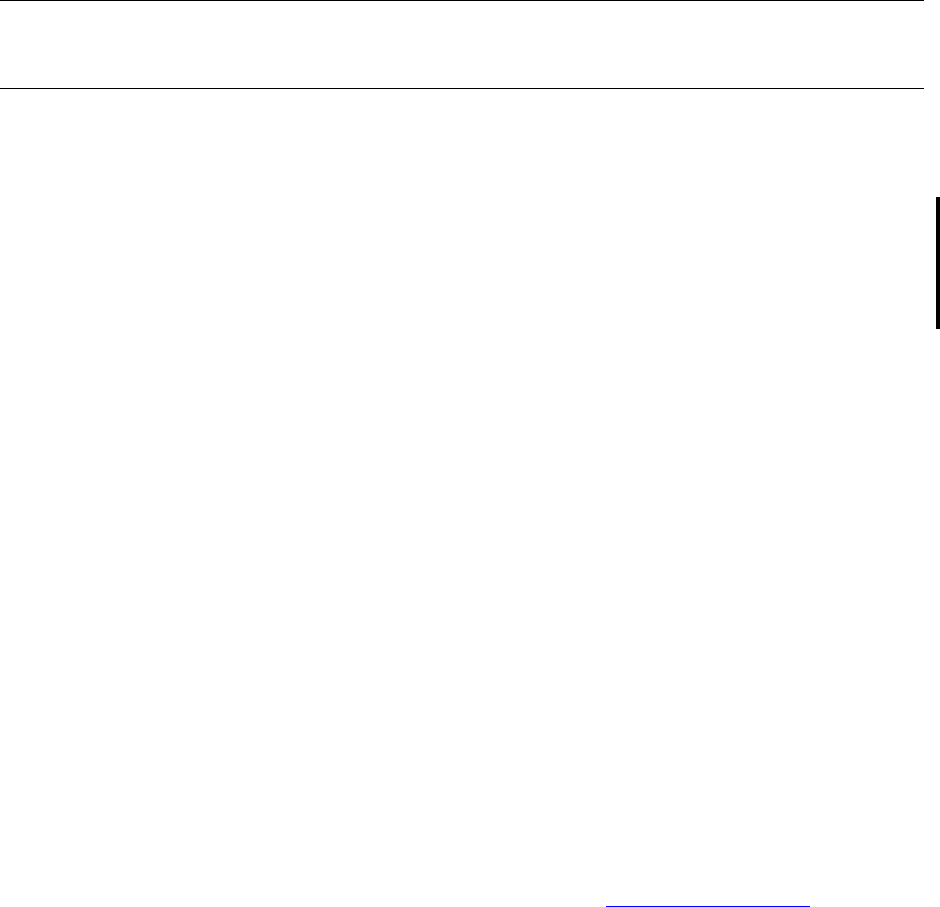RDF System Management Manual
Table Of Contents
- RDF System Management Manual
- What’s New in This Manual
- About This Manual
- 1 Introducing RDF
- RDF Subsystem Overview
- RDF Processes
- RDF Operations
- Reciprocal and Chain Replication
- Available Types of Replication to Multiple Backup Systems
- Triple Contingency
- Loopback Configuration (Single System)
- Online Product Initialization
- Online Database Synchronization
- Online Dumps
- Subvolume- and File-Level Replication
- Shared Access DDL Operations
- EMS Support
- SMF Support
- RTD Warning Thresholds
- Process-Lockstep Operation
- Support for Network Transactions
- RDF and NonStop SQL/MX
- Zero Lost Transactions (ZLT)
- Monitoring RDF Entities With ASAP
- 2 Preparing the RDF Environment
- 3 Installing and Configuring RDF
- 4 Operating and Monitoring RDF
- 5 Managing RDF
- Recovering From File System Errors
- Handling Disk Space Problems
- Responding to Operational Failures
- Stopping RDF
- Restarting RDF
- Carrying Out a Planned Switchover
- Takeover Operations
- Reading the Backup Database
- Access to Backup Databases in a Consistent State
- RDF and NonStop SQL/MP DDL Operations
- RDF and NonStop SQL/MX Operations
- Backing Up Image Trail Files
- Making Online Dumps With Updaters Running
- Doing FUP RELOAD Operations With Updaters Running
- Exception File Optimization
- Switching Disks on Updater UPDATEVOLUMES
- 6 Maintaining the Databases
- 7 Online Database Synchronization
- 8 Entering RDFCOM Commands
- 9 Entering RDFSCAN Commands
- 10 Triple Contingency
- 11 Subvolume- and File-Level Replication
- 12 Auxiliary Audit Trails
- 13 Network Transactions
- Configuration Changes
- RDF Network Control Files
- Normal RDF Processing Within a Network Environment
- RDF Takeovers Within a Network Environment
- Takeover Phase 1 – Local Undo
- Takeover Phase 2 – File Undo
- Takeover Phase 3 – Network Undo
- Takeover Phase 3 Performance
- Communication Failures During Phase 3 Takeover Processing
- Takeover Delays and Purger Restarts
- Takeover Restartability
- Takeover and File Recovery
- The Effects of Undoing Network Transactions
- Takeover and the RETAINCOUNT Value
- Network Configurations and Shared Access NonStop SQL/MP DDL Operations
- Network Validation and Considerations
- RDF Re-Initialization in a Network Environment
- RDF Networks and ABORT or STOP RDF Operations
- RDF Networks and Stop-Update-to-Time Operations
- Sample Configurations
- RDFCOM STATUS Display
- 14 Process-Lockstep Operation
- Starting a Lockstep Operation
- The DoLockstep Procedure
- The Lockstep Transaction
- RDF Lockstep File
- Multiple Concurrent Lockstep Operations
- The Lockstep Gateway Process
- Disabling Lockstep
- Reenabling Lockstep
- Lockstep Performance Ramifications
- Lockstep and Auxiliary Audit Trails
- Lockstep and Network Transactions
- Lockstep Operation Event Messages
- 15 NonStop SQL/MX and RDF
- Including and Excluding SQL/MX Objects
- Obtaining ANSI Object Names From Updater Event Messages
- Creating NonStop SQL/MX Primary and Backup Databases from Scratch
- Creating a NonStop SQL/MX Backup Database From an Existing Primary Database
- Online Database Synchronization With NonStop SQL/MX Objects
- Offline Synchronization for a Single Partition
- Online Synchronization for a Single Partition
- Correcting Incorrect NonStop SQL/MX Name Mapping
- Consideration for Creating Backup Tables
- Restoring to a Specific Location
- Comparing NonStop SQL/MX Tables
- 16 Zero Lost Transactions (ZLT)
- A RDF Command Summary
- B Additional Reference Information
- C Messages
- D Operational Limits
- E Using ASAP
- Index

Introducing RDF
HP NonStop RDF System Management Manual—524388-003
1-21
RDFNET Process
With sorted image trails, the activity of any one image file typically remains so low that
it can be stored on the same disk volumes as the main database with no significant I/O
impact. This approach is not recommended, however, if you require very high RDF
performance or if RDF is running with the UPDATE option turned off; in this case, the
image trails could eventually fill the volume; in such cases, it is best to have volumes
exclusively dedicated to the image trails.
Image trails can be added only after RDF has been initialized but before it has been
started.
RDFNET Process
The RDFNET process is a process pair that runs only on the primary node of the
network master in an RDF network. The RDFNET process creates synchronization
information used only during RDF takevoer.
Updater Processes
An updater process is a process pair that runs on the backup system when updating is
enabled or during takeover processing. Every volume on the primary system that is
protected by RDF has its own updater process on the backup system.
Each updater reads the image trail to which it has been configured, looking for audit
information associated with the data volume it protects (it ignores audit information
associated with volumes protected by other updaters). When it finds applicable audit
information, the updater sends the audit information to the disk process to be applied
to the backup database.
Each updater performs the following functions:
•
Reads large blocks of data from the RDF image file and searches for image
records associated with the updater’s volume on the primary system.
•
Opens and closes database files on the backup system for updating and
maintaining the backup database.
•
Defines restart points and updates restart information in the context file (named
CONTEXT). For an explanation of restart points, see Restart Information.
•
Sends information to RDFCOM for use in the STATUS RDF command display.
•
Issues a logical REDO request to the disk process (during the normal forward pass
over the image trail) for each update associated with its volume.
•
Issues logical UNDO requests to the disk process when backing out changes
associated with transactions that need to be undone during RDF takeover or
stop-update-to-timestamp operations.
Note. You should keep all image trail files off of the $SYSTEM volume and its controller.
Otherwise, if there is a lot of audit data to send from the primary system to the backup system,
it could take a while for the updaters to start.










